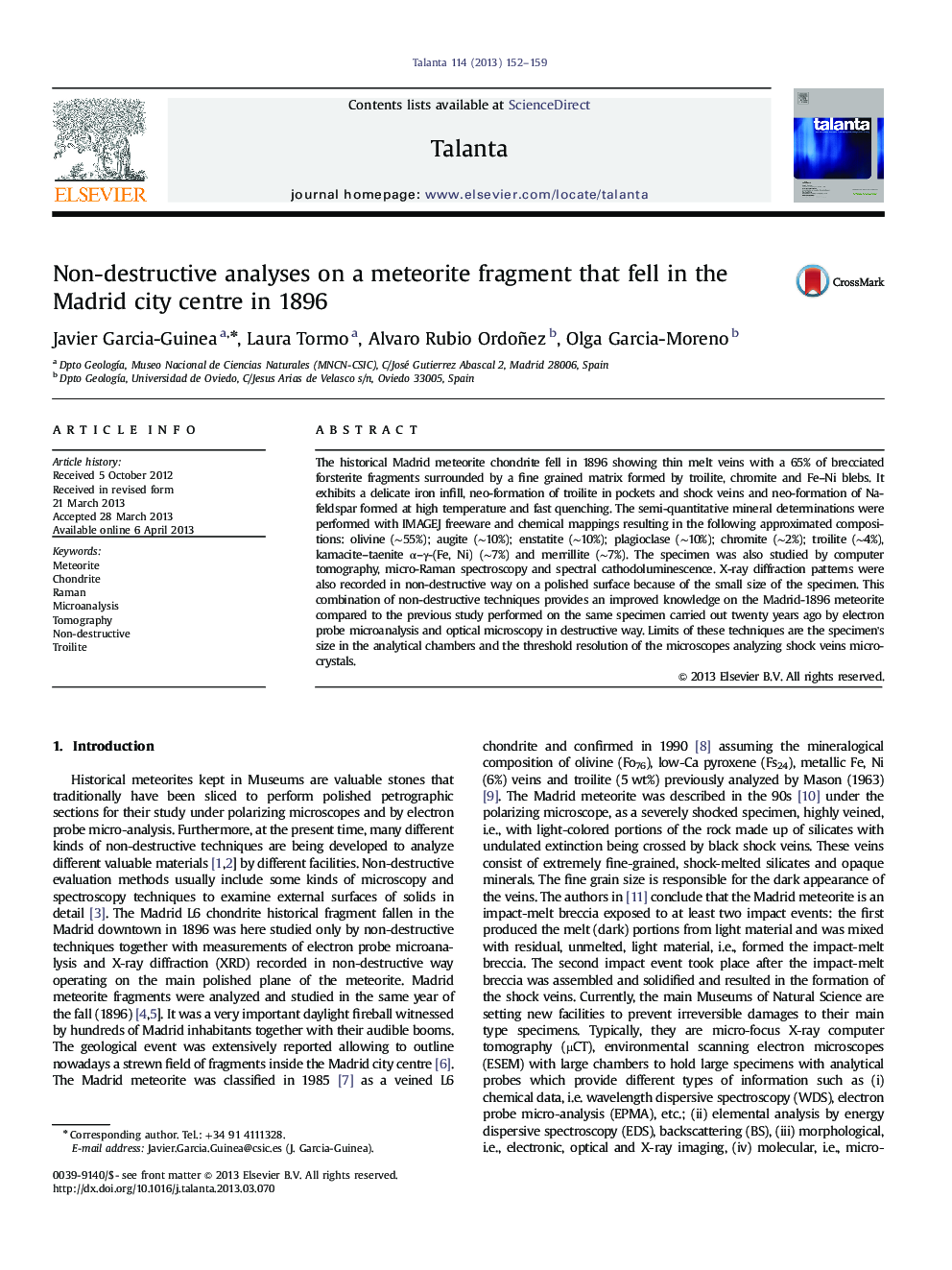| Article ID | Journal | Published Year | Pages | File Type |
|---|---|---|---|---|
| 7681796 | Talanta | 2013 | 8 Pages |
Abstract
The historical Madrid meteorite chondrite fell in 1896 showing thin melt veins with a 65% of brecciated forsterite fragments surrounded by a fine grained matrix formed by troilite, chromite and Fe-Ni blebs. It exhibits a delicate iron infill, neo-formation of troilite in pockets and shock veins and neo-formation of Na-feldspar formed at high temperature and fast quenching. The semi-quantitative mineral determinations were performed with IMAGEJ freeware and chemical mappings resulting in the following approximated compositions: olivine (â¼55%); augite (â¼10%); enstatite (â¼10%); plagioclase (â¼10%); chromite (â¼2%); troilite (â¼4%), kamacite-taenite α-γ-(Fe, Ni) (â¼7%) and merrillite (â¼7%). The specimen was also studied by computer tomography, micro-Raman spectroscopy and spectral cathodoluminescence. X-ray diffraction patterns were also recorded in non-destructive way on a polished surface because of the small size of the specimen. This combination of non-destructive techniques provides an improved knowledge on the Madrid-1896 meteorite compared to the previous study performed on the same specimen carried out twenty years ago by electron probe microanalysis and optical microscopy in destructive way. Limits of these techniques are the specimen's size in the analytical chambers and the threshold resolution of the microscopes analyzing shock veins micro-crystals.
Related Topics
Physical Sciences and Engineering
Chemistry
Analytical Chemistry
Authors
Javier Garcia-Guinea, Laura Tormo, Alvaro Rubio Ordoñez, Olga Garcia-Moreno,
